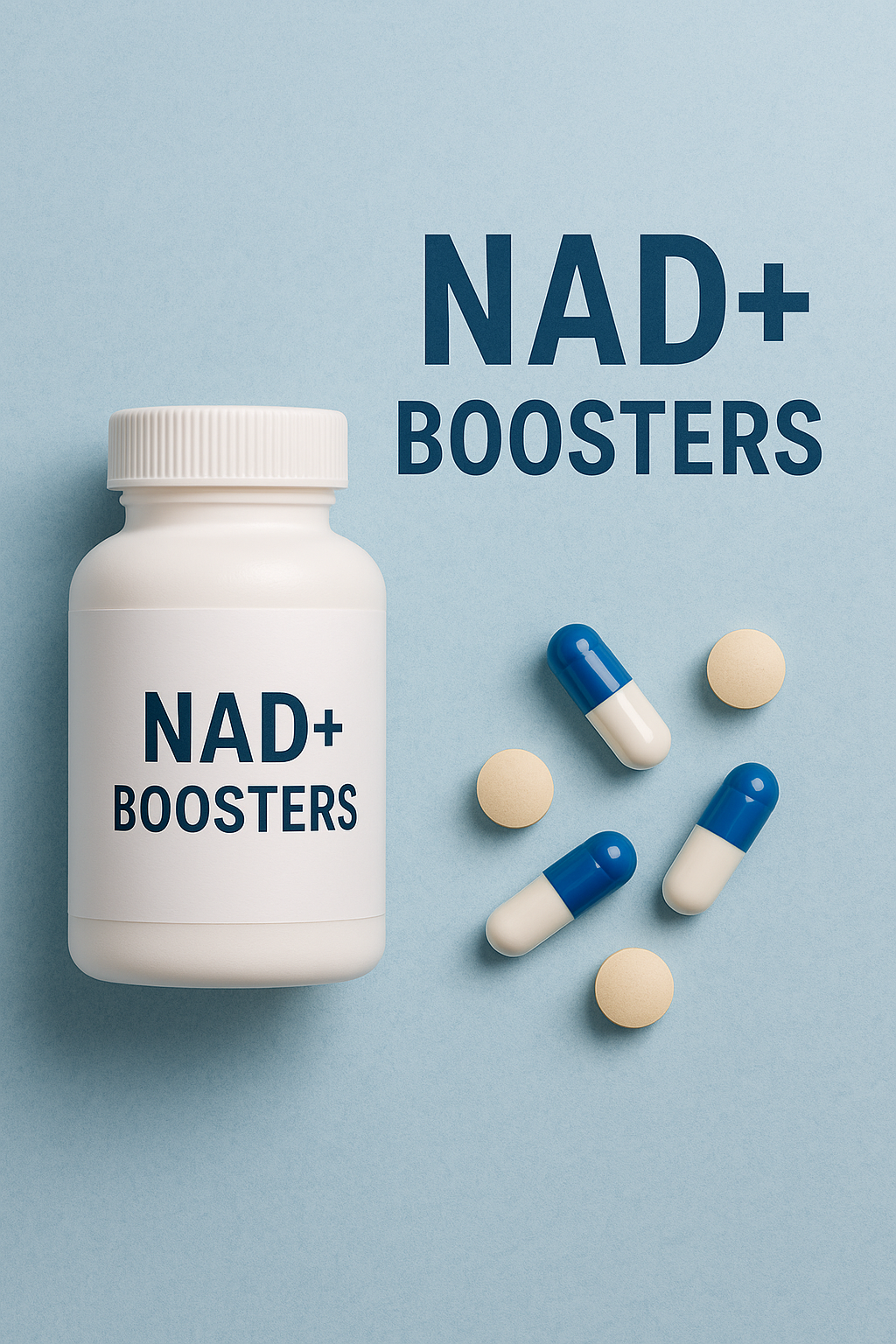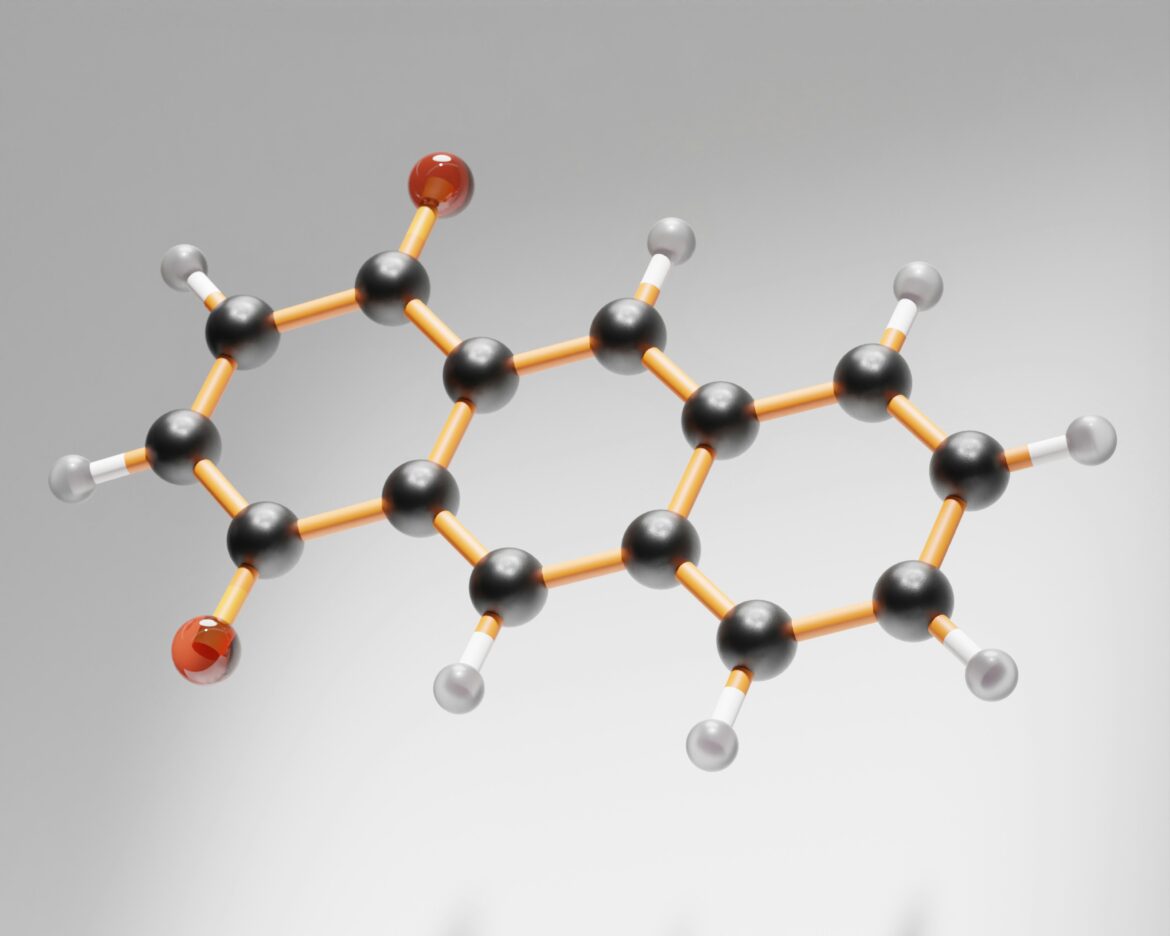If you’ve been dipping your toes into the world of health and longevity supplements, chances are you’ve already come across two buzzwords that keep popping up: NMN and NR. They’re often mentioned in the same breath as NAD+, another scientific-sounding term that seems to be at the heart of this whole conversation.
It can feel overwhelming at first, can’t it? You start reading about “precursors” and “metabolic pathways”, and suddenly you’re knee-deep in biochemistry when all you really wanted to know was: “Which one should I take?”
Why Do People Care About NAD+ Anyway?
 To understand NMN and NR, we need to talk about the real star of the show: NAD+.
To understand NMN and NR, we need to talk about the real star of the show: NAD+.
NAD+ (nicotinamide adenine dinucleotide) is a coenzyme that lives inside every single cell in your body. Imagine NAD+ as a kind of “cellular currency” — without enough of it, your cells can’t do their jobs properly. It’s involved in:
- Turning the food you eat into usable energy
- Repairing DNA when it gets damaged (which happens all the time)
- Supporting healthy brain function
- Regulating your sleep-wake cycles
- Helping mitochondria — your cells’ little batteries — run smoothly
Here’s the catch: as we age, NAD+ levels take a nosedive. By the time you hit middle age, your NAD+ levels may have dropped by 50% or more. That’s one reason many people notice they feel more sluggish, recover more slowly from exercise, or struggle with their metabolism as they get older.
And that’s where NMN and NR come in. These compounds are called NAD+ precursors — meaning they’re like the raw materials your body can use to make more NAD+.
What Exactly Is NR?
Let’s start with NR, or nicotinamide riboside.
Think of NR as a special form of vitamin B3. You’ll actually find it in tiny amounts in everyday foods like milk, but the amounts are so small they won’t do much on their own. That’s why supplement companies produce concentrated versions in capsule or powder form.
When you take NR, your body converts it into NMN, and then NMN gets turned into NAD+. It’s like a two-step process:
- NR → NMN
- NMN → NAD+
So, while NR doesn’t turn into NAD+ immediately, it’s still a very efficient way of getting there.
NR has been on the supplement market longer than NMN, and it’s supported by quite a few human studies. That means we know a fair bit about its safety and effectiveness, at least in terms of raising NAD+ levels in the body.
And What About NMN?
Now let’s look at NMN, or nicotinamide mononucleotide.
Remember how NR had to first convert into NMN before becoming NAD+? Well, NMN skips that first step. It’s already one rung higher up the ladder, closer to NAD+.
For a while, scientists weren’t sure if NMN could be absorbed directly by the body or whether it had to break down into NR first. But newer research suggests NMN has its own special “transporters” in the gut, which help it get absorbed and converted straight into NAD+. That discovery really boosted NMN’s popularity, many people started calling it the more “direct” option.
It’s newer to the supplement scene compared to NR, but it’s quickly caught up in popularity thanks to glowing headlines, animal studies showing impressive results, and a growing number of human trials.
Breaking Down the Differences
On the surface, NMN and NR look like twins. They’re both vitamin B3 derivatives, both lead to NAD+ production, and both are marketed with promises of energy, longevity, and anti-ageing. But if you look closely, there are a few subtle differences that are worth keeping in mind.
1. Conversion Pathway
- NR → turns into NMN → then NAD+
- NMN → converts straight into NAD+
That missing step may make NMN slightly more efficient, though the body is pretty good at converting both.
2. Research Base
- NR: More established, with several human studies published.
- NMN: Newer, with fewer (but rapidly growing) human trials.
3. Stability
- NR: Known for being stable in supplement form.
- NMN: Used to be tricky to stabilise, but advances in supplement production mean most high-quality NMN products are now shelf-stable.
4. Potential Benefits
Both are linked with boosting energy, metabolism, and general cell health. However, some early research suggests NMN might have a slight edge in physical performance and muscle strength, at least in animal studies.
What the Science Says
 Let’s be honest here: longevity science is still a young field. While both NMN and NR have promising data behind them, neither has been studied long enough for us to make sweeping claims.
Let’s be honest here: longevity science is still a young field. While both NMN and NR have promising data behind them, neither has been studied long enough for us to make sweeping claims.
- NR studies: Human trials have shown NR supplementation can reliably raise NAD+ levels. Some studies also report improvements in blood pressure and markers of cardiovascular health.
- NMN studies: While most research so far has been in animals, human trials do suggest NMN supplementation is safe and can increase NAD+ levels, with hints at benefits for muscle performance and insulin sensitivity.
Both look promising, but NR has more human data backing it up right now. NMN may catch up as more trials are completed.
So What Benefits Might You Notice?
It’s easy to get caught up in the scientific details, but let’s bring this back to everyday life. Why would someone actually consider taking NMN or NR?
Here are some of the potential benefits people are most interested in:
- More consistent energy: NAD+ fuels your mitochondria, and mitochondria fuel your body. More NAD+ may mean fewer afternoon crashes.
- Better recovery: Whether from workouts or just day-to-day stress, supporting NAD+ could help your cells repair themselves more efficiently.
- Metabolic support: Some early research suggests NAD+ boosters may help regulate blood sugar and fat metabolism.
- Brain health: NAD+ is involved in protecting neurons, so researchers are exploring whether supplementation may support cognitive function as we age.
- Cardiovascular health: Animal studies have shown improvements in blood vessel function, which could translate into long-term heart benefits.
It’s worth pointing out that most people won’t feel a dramatic overnight change. This isn’t like drinking coffee or taking an energy drink. Instead, the benefits are thought to be gradual and long-term, more about supporting your overall cellular health than giving you an immediate “kick”.
Are They Safe?
Generally speaking, both NMN and NR are considered safe. Human studies on NR show good tolerability, and NMN trials so far report minimal side effects.
The side effects that do pop up are usually mild, such as:
- Nausea
- Digestive discomfort
- Headaches
That said, since research is still developing, it’s smart to be cautious. Quality matters a lot in this supplement space, so always choose a reputable brand that tests for purity. And of course, it’s wise to check with your doctor before starting if you’re pregnant, breastfeeding, or managing a health condition.
NMN vs. NR: How Do You Choose?
This is the big question, isn’t it? If you’re standing in front of two bottles at your favourite supplement shop, which one do you pick?
Here’s a simple way to think about it:
- If you value a stronger research foundation and want something that’s been tested more in humans, NR is a solid choice.
- If you’re intrigued by the idea of a more direct pathway to NAD+ and don’t mind going with the newer option, NMN might be more appealing.
Some people even take both — though that can get expensive!
Cost and Availability
This brings us nicely to the subject of cost.
- NR tends to be cheaper, simply because it’s been around longer and is easier to produce.
- NMN used to be much more expensive, but as it’s become more mainstream, prices are gradually dropping.
If you’re on a budget, NR may be the more accessible starting point.
A Balanced Perspective
At the end of the day, neither NMN nor NR is a magic bullet. They’re exciting tools, sure, but they’re not going to undo the effects of a poor diet, lack of sleep, or a sedentary lifestyle.
Think of them as part of a bigger toolkit. A healthy lifestyle — full of whole foods, regular movement, quality sleep, and stress management — is still the foundation. NMN or NR might give your cells a bit of extra support on top of that.
Final Thoughts
So, NMN vs. NR: what’s the real difference?
- NR has more human research behind it and reliably raises NAD+ levels.
- NMN is newer, may be more direct in its pathway, and is showing very promising results.
Both are safe, both have their fans, and both are likely to keep gaining attention as longevity science evolves.
If you’re curious, you could start with one, track how you feel, and adjust from there. Ultimately, the “best” choice may come down to personal preference and budget.
And remember: supplements can be powerful, but they work best alongside the basics — eating well, moving often, and getting enough rest. Because at the end of the day, healthy ageing isn’t about one pill. It’s about supporting your body in every way you can.









 Now that we understand the myriad benefits of glutathione, it’s essential to know how to maintain optimal levels. Consuming foods rich in sulfur, such as garlic, onions, and cruciferous vegetables (broccoli, kale, cabbage), can enhance glutathione production. Additionally, foods high in selenium, such as Brazil nuts and seafood, support glutathione activity.
Now that we understand the myriad benefits of glutathione, it’s essential to know how to maintain optimal levels. Consuming foods rich in sulfur, such as garlic, onions, and cruciferous vegetables (broccoli, kale, cabbage), can enhance glutathione production. Additionally, foods high in selenium, such as Brazil nuts and seafood, support glutathione activity. 

